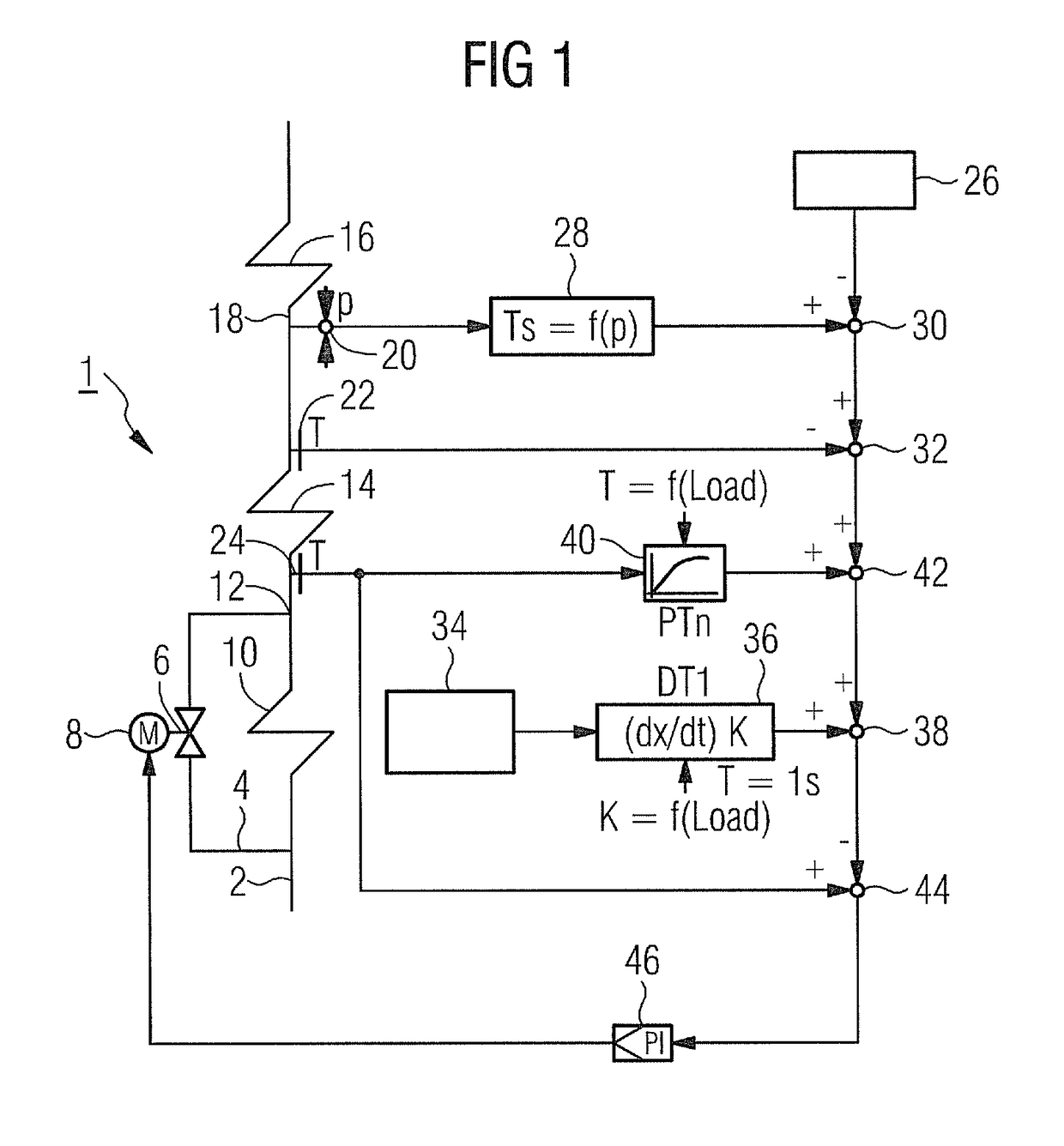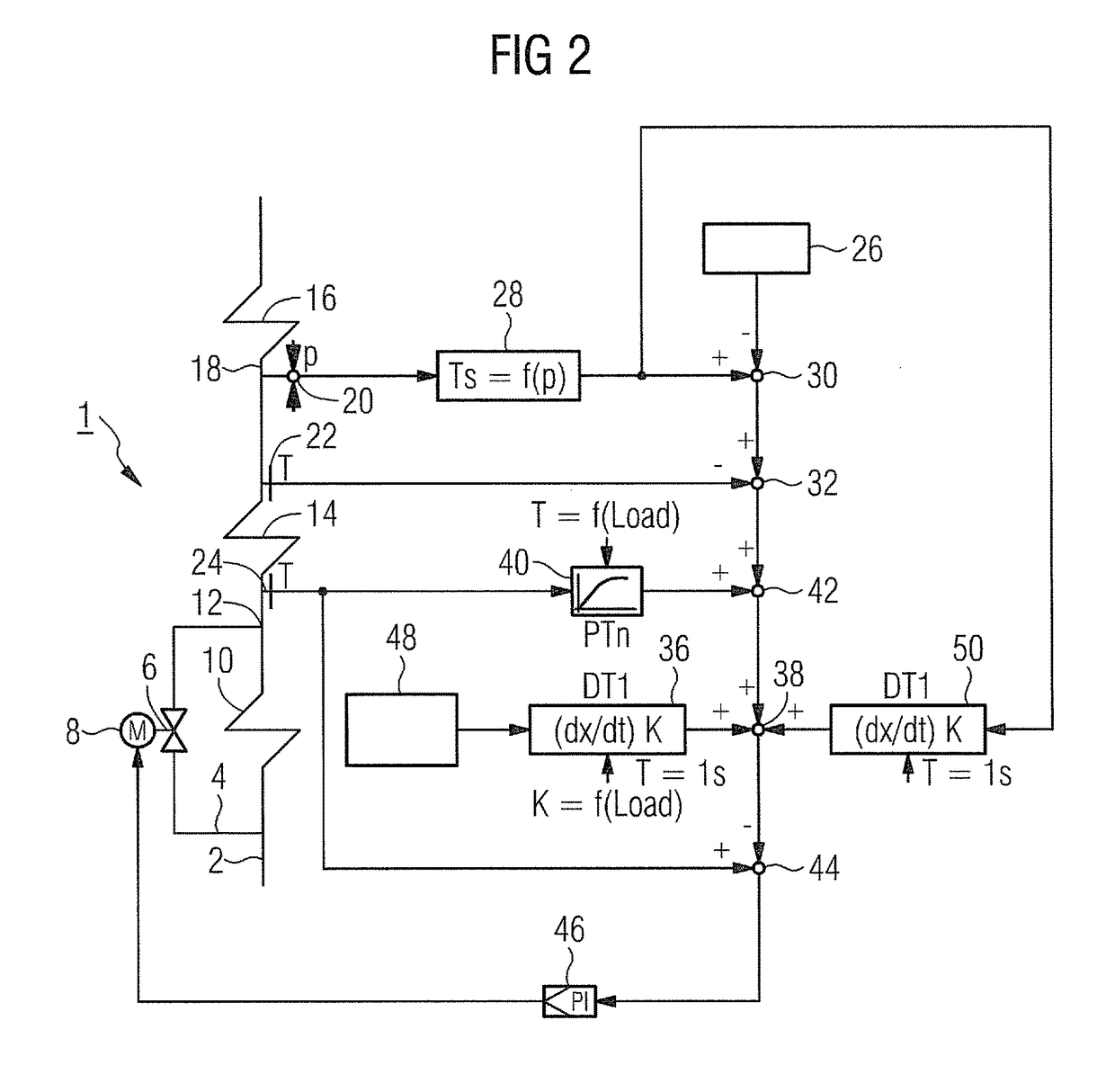Method for operating a waste heat steam generator
a waste heat steam generator and waste heat technology, applied in steam engine plants, lighting and heating apparatus, boiler control, etc., can solve the problems of comparatively high risk of steam formation, and achieve the effect of avoiding excessive temperature fluctuations at the evaporator outlet and predicting and safe operation
- Summary
- Abstract
- Description
- Claims
- Application Information
AI Technical Summary
Benefits of technology
Problems solved by technology
Method used
Image
Examples
Embodiment Construction
[0033]FIG. 1 firstly shows in schematic form selected components of a waste heat steam generator 1. Flow medium, driven by means of a pump (not shown), flows into the circuit initially at the inlet 2, a bypass line 4 initially branching off. In order to regulate the flow through the bypass line, a flow regulator valve 6 is provided which is controllable by means of a motor 8. A simple control valve may also be provided, although a better adjustment of the supercooling at the evaporator inlet is possible by means of a rapidly responding regulator valve.
[0034]A part of the flow medium consequently flows into the bypass line 4 as a function of the position of the flow regulator valve 6, while another part flows into a first economizer heating surface 10. Further economizer heating surfaces can also be provided in parallel with the bypass line 4. At the outlet of the economizer heating surface 10 the flow medium from the bypass line 4 and the flow medium from the economizer heating surf...
PUM
 Login to View More
Login to View More Abstract
Description
Claims
Application Information
 Login to View More
Login to View More - R&D
- Intellectual Property
- Life Sciences
- Materials
- Tech Scout
- Unparalleled Data Quality
- Higher Quality Content
- 60% Fewer Hallucinations
Browse by: Latest US Patents, China's latest patents, Technical Efficacy Thesaurus, Application Domain, Technology Topic, Popular Technical Reports.
© 2025 PatSnap. All rights reserved.Legal|Privacy policy|Modern Slavery Act Transparency Statement|Sitemap|About US| Contact US: help@patsnap.com



